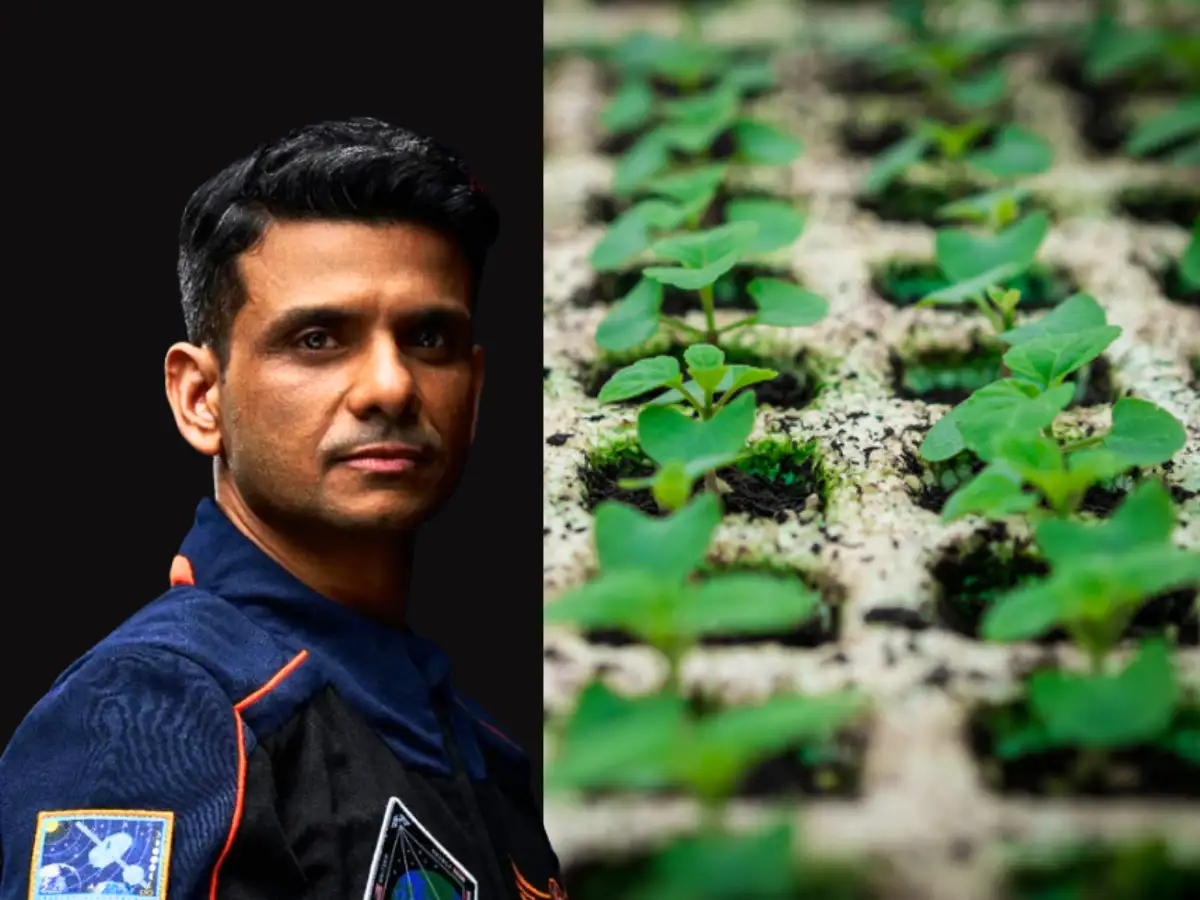Summary:
- IAF’s Shubhanshu Shukla selected to grow methi and moong aboard the ISS
- Part of India-US space cooperation under the Gaganyaan initiative
- Focus on studying Indian crop growth in zero gravity
- Step towards long-term human missions and food sustainability in space
- Indian crops chosen for high nutrition, short growth cycle, and cultural relevance
As global space agencies prepare for longer missions and deeper journeys, questions around food sustainability are no longer theoretical. For India, that challenge is becoming real—and personal.
This year, Shubhanshu Shukla, an Indian Air Force pilot and one of the four astronauts shortlisted for India’s maiden human spaceflight mission, will take a unique assignment aboard the International Space Station (ISS): growing methi (fenugreek) and moong (green gram) in microgravity.
The experiment, a joint initiative between ISRO and NASA, isn’t just about plants. It’s about India’s readiness to contribute meaningfully to space life sciences, and perhaps, about bringing something of home along with humanity’s farthest travels.
Why Indian Crops in Space?
The selection of crops is deliberate.
- Methi and moong are rich in protein, fiber, and essential micronutrients.
- They are widely used in Indian households, making them culturally familiar.
- Most importantly, they grow fast and require minimal resources.
In the close quarters of a space station or future moon base, these qualities matter. Short growth cycles reduce wait times. High nutritional value eases dietary planning. And familiarity provides psychological comfort.
NASA has already experimented with crops like lettuce, radishes, and peppers. India is now adding its own signature to the orbital farm.
A Personal Mission for a National Milestone
Group Captain Shubhanshu Shukla, currently training at NASA’s Johnson Space Center, has flown fighter jets, trained in survival under extreme conditions, and now prepares for the profound stillness of space.
He is among the first batch of Indian astronauts selected for the Gaganyaan mission, India’s most ambitious human spaceflight program. But this experiment is not about the big mission photos. It’s about patient observation, data collection, and a quiet revolution in space agriculture.
The idea: Can Indian superfoods support human survival beyond Earth?
Learning from Precedent: A Look at NASA’s Work
NASA’s VEGGIE experiment on the ISS demonstrated how leafy greens can be grown in space. In 2021, astronauts harvested chile peppers after a 137-day grow cycle—boosting both nutrition and morale.
For India, this is a crucial learning moment. If methi and moong succeed in microgravity, future Indian astronauts could cultivate their own familiar diets—enhancing physical health and emotional stability during long missions.
Toward a Larger Vision
The ISRO-NASA collaboration goes beyond symbolic missions. It reflects a maturing partnership where India brings both technology and cultural insight to global efforts in space sustainability.
This experiment may shape how food systems are designed for:
- Deep-space missions to the Moon or Mars
- Orbital stations co-managed by international agencies
- Closed-loop life-support systems where plants clean air and water in addition to feeding humans
For a country that once looked up at the moon in awe, India now prepares to send seeds into the stars—and hopes they’ll sprout.
The Bigger Question
What does it mean for a country to plant its own crops in orbit?
For Shubhanshu Shukla, it’s part of his training. For ISRO, it’s part of a roadmap. But for India, it’s something more: the first sign that our future in space will not just be about engineering, but about carrying our culture, food, and identity along for the journey.



